I thought this was a bit too basic, but I’ve been asked for a tutorial for beginning boaters tying to a cleat, so here goes! First of all, more is not better! As you look at the feature photo, this tie-up has the required loops — in fact it has about a gazillion of them. If you’re ever tied up somewhere with current rushing by where you need to get lines unattached quickly, this could be a major complication! Captain Ron would probably agree saying “if it’s going to happen ….”
Ummm…no … merely wrapping the line multiple times around the cleat has nothing to stop it from working loose.
The first time in a critical situation where I was required to jump off the boat and loop a line over a cleat, not only did I totally MISS the cleat because my hands were shaking so bad, I also dropped the boat hook overboard and left David onboard by himself to maneuver the boat back around to the T-dock and re-dock in some serious current and wind. Obviously I learn the hard way.
Here’s how David taught me to tie to a dock cleat, now it’s second nature and I don’t even think about it when we return to a dock.
First loop the line around the cleat.
Continue to loop the line around until it crosses itself.
Bring the line over the top of the cleat as shown.
Around the end and over the top, making lines on the top cross — or form a figure eight.
Now comes the tricky part for me — form a loop with the end that you’re going to put over the other end of the cleat — notice that the bottom line of the loop is parallel with the figure 8 already on the cleat.
And pull it taunt — note the two parallel lines under the top line … apparently this is the “correct” way — or so I was taught. I’m sure everyone does it differently, but since we were asked, this is what you get! 🙂
Now you’ll likely have line left over — rather than wrapping and re-wrapping it around the cleat, it’s easier to let loose if you just coil it alongside the cleat. Some people like a twisted almost braided look display of their extra line, but that’s far too complicated for me to learn! I understand it falls apart when you pick it up and it does look lovely, but not for me! 🙂
That’s it, that’s all. I’m sure someone will be critical saying they do it some other way, but in our minds the most important things are: first, will the line stay on the cleat and not let loose even under windy or current conditions. The second most important thing is that you can let the line loose instantly in an emergency. Before we leave a dock, David usually changes the lines so they’re just looped around and all I have to do is pull them back aboard – or if we’re leaving a dock which we’ll return to soon, just throw or use the boat hook for the boat end of the lines onto the dock or piling.
Anyone do it differently? Any ideas for those first learning to tie to a dock cleat? Please leave a comment and share! CHEERS! Jan
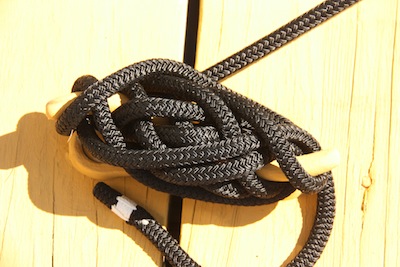
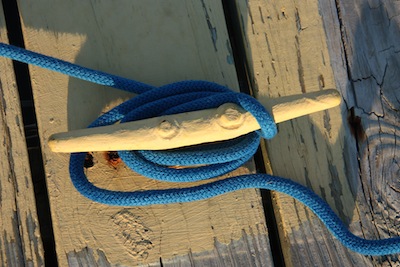
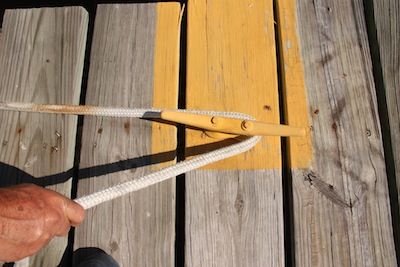
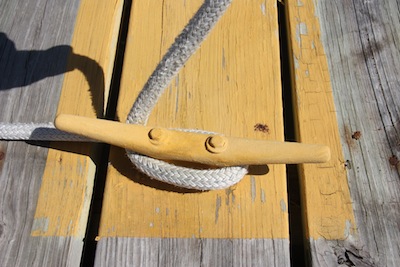
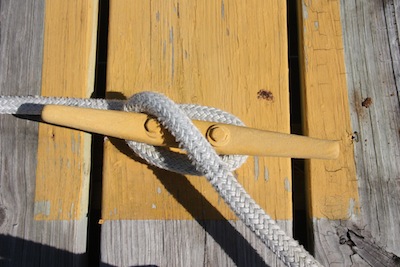

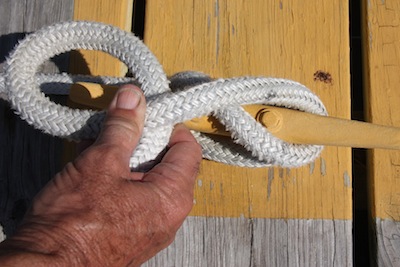
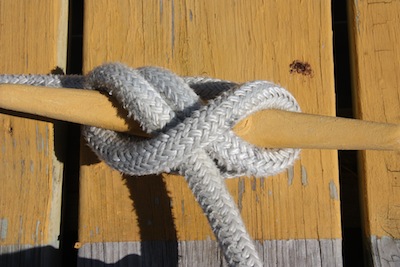
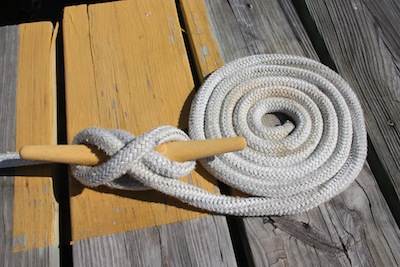










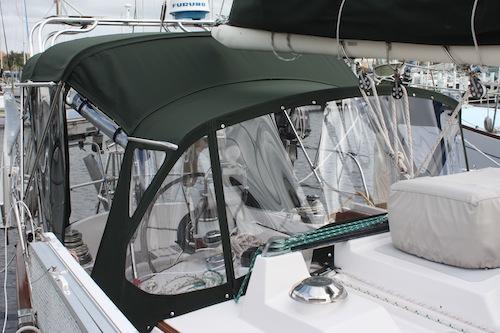


Bravo Jan! Looks perfect.
You mentioned the “two parallel lines under the top line” – correct, and it’s important. As the boat moves and tugs at the line, it’s possible for the loops to loosen with the movement. Having the two lines “parallel” avoids that problem, having them otherwise does NOT – I learned that from experience too!
Love your posts, always. My new bride and I are wanna-be cruisers, and our honeymoon bareboating in the BVI have made the urge even stronger. Some day soon… Need a suitable boat first though!
Sorry ship mate butt by putting in that half hitch on the horn you just asking to take out somebody’s finger someday. Making up a cleat is simple 1 full round turn on the cleats then three figure eights and one full round turn again locks the cleat. Under surge conditions you will not cinch the line to the cleat horns which requires fingers to go into dangerous places. Instead you can simply take it down to one set of figure eights and slack off the line. Having had to do two medevacs for people who put their fingers into the half hitch while the boat was surging against The Mooring line I have become a strong anti half hitch person. Not to mention I work on a 980 ton ship and we don’t do any half hitches when we make up our bits or cleats. We use the same method I listed above.
There is one proper way to tie a line to a cleat. This tutorial is correct. My credentials? Unlimited second mate’s license and head of ship’s deck dept. in USN. Captain Christopher is dead wrong.